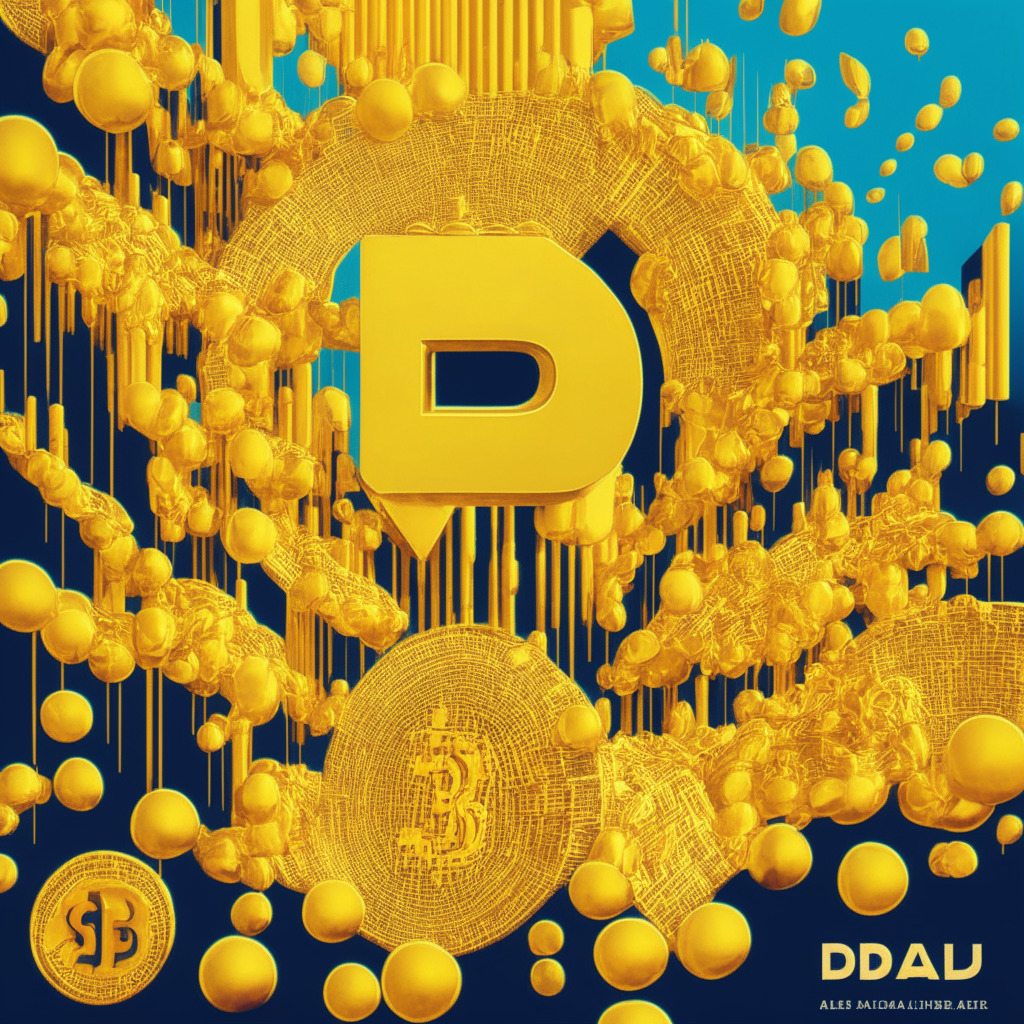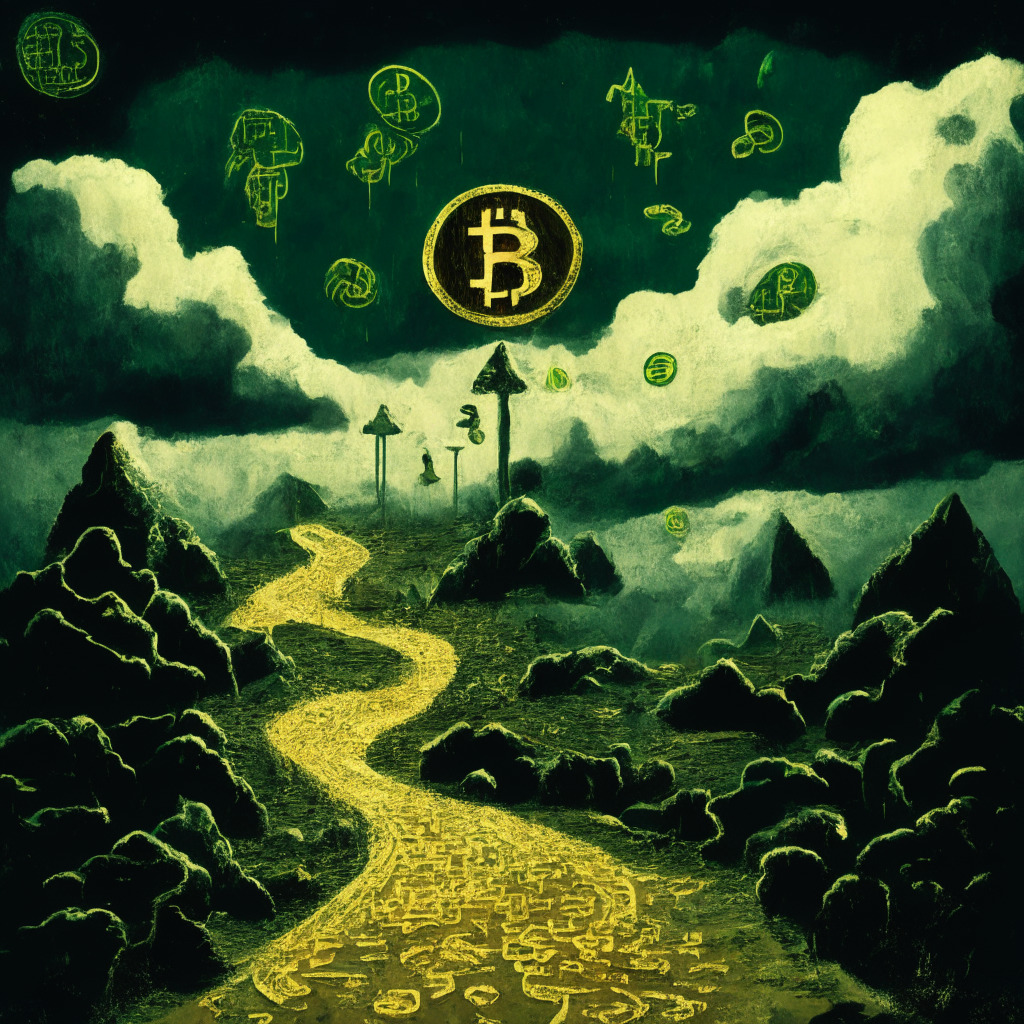The U.S. is still in the “basic research” phase of developing a central bank digital currency (CBDC), according to Federal Reserve Vice Chairman, Michael Barr. He highlighted the importance of gaining backing from legislative bodies, addressing risks posed by stablecoins, and establishing a competent regulatory framework before proceeding with any initiatives.
Search Results for: US dollar
State-Sponsored Crypto Heists: A Deep Dive into the Threat of North Korea’s Lazarus Group
“The North Korea-affiliated Lazarus Group has allegedly stolen $41 million in crypto from Stake.com, according to the FBI. Using a leaked private key to a hot wallet, the loot spread across Ethereum, BSC, Polygon, and Bitcoin networks. These hacking events highlight the crypto industry’s vulnerability and necessity for effective security measures.”
Reshaping America’s Financial Future: The Digital Dollar Dilemma and Road to CBDC Regulation
The House Financial Services Committee is preparing to discuss the implications and regulation of a digital dollar or Central Bank Digital Currencies (CBDCs), along with private sector alternatives. This conversation, following various states erecting legislative boundaries for CBDCs and $41 million hacking of a crypto site, underlines the need for balance between innovation and robust regulatory frameworks.
Navigating Binance’s Controversial Actions: Million Dollar Refunds and Rug Pulls Fallout
“Binance plans to refund 887 users who were unable to redeem their staked CYBER tokens due to borrowing by opportunistic traders during a liquidity crunch. The compensation includes 800,000 USDT and 871 CYBER in staking rewards, along with 200,000 USDT worth of vouchers from CyberConnect Foundation. The incident has led to a discussion on better safeguards and decision-making processes in crypto exchanges.”
Unleashing the Trillion-Dollar Future: Blockchain, Tokenization and Global Finance
“Mirae Asset Securities partners with Polygon Labs to promote Web3 tech adoption via tokenizing finance. The partnership seeks to overcome challenges such as steep learning curves and global regulatory disparities. The Mirae-led initiatives aim to foster interoperability between financial systems and propose a forward-thinking approach to digital finance.”
Crypto Mining Boom in Russia: A Double-Edged Sword with an Environmental Impact
An illicit cryptocurrency miner in Russia’s Far East allegedly stole $225,000 in electricity, causing major harm to a local grid. Such unauthorized access for mining is harmful to power networks, leading to heavy penalties. This incident underscores the increasing issue in the crypto mining space of unauthorized electricity consumption by illicit miners, posing threats to energy grids and overall security.
Implications of Cryptocurrency Inclusion in US Accounting Rules: The Triumphs & Tribulations
The adjustment to the FASB accounting rules extends fair value accounting to include cryptocurrency holdings, impacting all organizations that align with U.S. GAAP. This realignment redefines the understanding of discriminatory aspects like fair value, potentially encouraging more corporate adoption of crypto. However, the change also heightens the volatility risk in earnings.
Visa Dives into Stablecoin Payments: A Futuristic Move or an Unnecessary Intrusion?
“Visa partners with Solana blockchain, venturing into stablecoin payments. This sees Visa using stablecoins like USDC and blockchain networks such as Solana and Ethereum to increase cross-border settlement speed and offer more accessible options for fund transfers via Visa’s treasury.”
VISA Leverages Solana Blockchain and USDC Stablecoin for Faster International Payments
“VISA has enhanced its stablecoin settlement ability with Circle’s USDC stablecoin on the high-speed Solana blockchain, making it one of the first financial institutions to harness Solana for scaled settlements. VISA’s integration of stablecoins like USDC on global blockchain networks aims to improve international settlements speed and give clients a modern option to conveniently transact funds.”
Tether’s Ascent: Top Holder of US Treasury Bills and What That Means for Crypto
“Tether, one of the world’s leading buyers of US Treasury bills, has increased its holdings to $72.5 billion. Despite the complexities expansion brings, this represents the growing mainstream acceptance of digital currencies and their incorporation into the traditional financial world.”
Navigating Crypto Regulations: Binance Australia’s Unfolding Narrative Amid Trials and Triumphs
“Binance Australia faces regulatory challenges and halted transactions due to high scam risks. Despite this, they remain committed to working with local authorities and resuscitating services for their customers. The Australian Treasury seeks to establish a token classification framework by 2024, marking a significant step towards a regulated crypto market.”
Shibarium’s Robust Activity: Over 700,000 Transactions Despite Troubled Launch
Following initial launch issues, the Shibarium network witnessed over 700,000 transactions from about 600,000 wallets. Despite only having $1.26 million locked, Shibarium’s robust activity reflects its potential for swapping, loaning, and borrowing capital or staking tokens.
Australia’s Crypto Future: Binance’s Battle for Acceptance Amid Regulatory Tensions
“Cautious optimism pervades the Australian crypto community as Binance Australia General Manager Ben Rose voices confidence that regulators will create suitable guidelines for digital assets, despite recent regulatory tensions and banking blocks. Restoration of banking relationships and resuming fiat ramp service are top priorities.”
Arbitrum Stylus: Next-Gen Tool for Crypto Coding or Just Another Developer Gimmick?
Offchain Labs, creators of the Arbitrum blockchain, have developed a tool called Arbitrum Stylus to tap into the larger developer community. This tool facilitates easier working with popular languages like Rust, C++, and C without departing from the Ethereum Virtual Machine standard. It seeks to bring more developers towards the Ethereum ecosystem, leveraging languages more common than Solidity, the main Ethereum coding language. The ultimate deployment of Arbitrum Stylus rests with the Arbitrum DAO community.
Tether’s New Link with Bahamas-Based Britannia Bank: A Boon or Bane for the Crypto Industry?
Tether, the issuer of popular stablecoin USDT, has established banking relations with Britannia Bank & Trust. This connection could streamline dollar transfers, improving Tether’s functioning within the traditional financial network. Britannia’s recent acquisitions and positive stance on crypto suggest this relationship is strategic for both entities, impacting the future of the crypto industry.
BlockFi’s Redemption Saga: From ‘Trade Only’ Assets to Gemini Dollars and Patricia’s PTK Crisis
BlockFi’s saga continues as the company seeks court authorization to convert ‘trade only’ assets into stablecoins for user withdrawal. This move, supported by the Committee of BlockFi creditors, is part of efforts to return user funds. However, uncertainty remains due to debt and questionable plans. Similarly, Patricia crypto exchange faces skepticism over its debt token, Patricia Token (PTK). These situations highlight tension between trust, regulation, and innovation in the crypto world.
Robinhood’s Tenuous Ties with Crypto: Navigating Uncertainty and Shifting Alliances
Robinhood has severed ties with market-making partner Jump Trading, a significant player in its crypto ventures. This decision stems from the unstable regulatory landscape and changing internal alliances. Moreover, Robinhood’s recent financial records reveal a drop in interest in crypto trading, with trading figures decreasing by 68% relative to the previous year. Despite this data, Robinhood remains one of the largest bitcoin holders.
Bitcoin Spot ETF Reconsideration: A Cause for Optimism or Premature Euphoria?
The U.S. Security and Exchange Commission’s reconsideration of Grayscale’s Bitcoin spot ETF has sparked optimism among market participants. Despite this, some remain cautious, warning that the decision doesn’t guarantee Grayscale an ETF listing. Further, the stagnation of digitized asset markets and potential negative effects of bitcoins held at short-term loss could impact faith in Bitcoin. However, the decision suggests possible future favorable decisions on regulatory reforms in the U.S. digital asset markets.
Tether’s Banking Partnerships: An Advance Toward Global Inclusivity or a Regulatory Nightmare?
Tether, the issuer of popular stablecoin USDT, has partnered with Britannia Bank & Trust, a private bank based in The Bahamas, for processing dollar transfers. Notwithstanding critics’ doubts over the assets backing the $86 billion held by Tether, it accounts for around 66.5% of the total stablecoin market.
Circle’s Stablecoin USDC Set to Launch on the Base Network: A Leap Forward or a Leap of Faith?
Circle’s CEO Jeremy Allaire recently announced a significant shift for the company’s U.S. dollar-pegged stablecoin, USDC, which will now launch natively on the Base network. This aims to gradually reduce the need for a bridged coin backed by the Ethereum variant. Despite the development, underlying trust issues remain, emphasising the stability of the Base network and potential issues resulting from reliance on bridged tokens.
USTY Tokens: Revolutionizing the Financial Sector Despite Intense Rivalries and Market Volatility
“USTY tokens, a tokenized version of shares in a U.S. Treasury bond ETF, are the prime example of the tokenization of real-world assets. This transition towards tokenization could create a $5 trillion market within five years. Despite challenges, tokenization has potential to transform financial infrastructure, backed by nearly sixfold increase in demand for tokenized Treasuries to $622 million this year.”
Binance Regulations and Its Impact on Russian Cryptocurrency Traders: An Analytical Perspective
“Binance introduces new P2P trading restrictions specifically targeting its Russian clients, limiting them to only using the Russian ruble. While narrowing choices, this strengthens local control over RUB in the Russian crypto sphere. However, Russians abroad face difficulties as their usage of other currencies has been banned on the platform.”
PayPal’s PYUSD Stablecoin: A Turbo Boost or Damp Squib for Crypto Adoption?
PayPal’s recently launched stablecoin, PYUSD, appeared to have a slow start with 90% of it residing in Paxos Trust’s reserves and only 7% on crypto exchange wallets. However, despite the somewhat sluggish kick-off, it’s still early days; a shift in the crypto market could significantly change PYUSD’s future prospects.
Bitcoin and the US Consumer Debt – A Perfect Storm Brewing or a Miscalculated Risk?
“The mounting US consumer debt could provide an advantage for Bitcoin’s price amid an evolving economic landscape. While consumers expend the surplus savings built up during the pandemic, threats of inflation loom. Amid these uncertainties, cryptocurrency, particularly Bitcoin, may see influences in its trajectory.”
Cryptocurrency Coders in Legal Crosshairs: Who is Accountable for Blockchain Misuse?
“Roman Storm and Roman Semenov, coders of the Tornado Cash protocol, face U.S. legal proceedings, accused of aiding North Korea’s Lazarus Group with money laundering. This indictment raises questions on developer accountability, regulation standards, and the balance between potential national security risks and the right to financial independence and privacy in blockchain technology.”
Legal Shifts in Ripple v. SEC: A Game of Musical Chairs and Patricia’s PTK Launch: Building Suspense or Building Concern in Crypto World?
“The ongoing SEC v. Ripple lawsuit takes a fascinating turn with the withdrawal of three SEC attorneys and the addition of new ones, potentially impacting case progression. Meanwhile, Nigerian crypto exchange Patricia launches its native token, Patricia token (PTK), amidst security breach speculations and customer fund access issues, sparking worries of a potential exit scam. These developments underscore existing uncertainties in crypto regulation.”
Prosper or Perish: The Fine Line Between Innovation and Mistrust in the Launch of Patricia Token
Patricia, a Nigerian cryptocurrency exchange, has launched its native token, Patricia token (PTK), aligning with the mainstream trend of cryptocurrency adoption. However, the move has raised suspicion due to prior issues with fund accessibility, absence on major crypto aggregators, and the planned conversion of outstanding balances to PTK without customer consent.
Navigating Binance.US’s Bold Transition from USD to USDT Amidst Regulatory Challenges
“Binance.US, amid banking challenges, partnered with MoonPay, replacing USD with USDT, turning the exchange into a cryptocurrency-based platform. While facing regulatory scrutiny, it suspended fiat withdrawals and transactions, indicating a retreat from traditional financial systems. The switch raises questions about future banking.”
Digital Yuan: An Impetus for Cross-Border Payments or Just a Fleeting High?
“The Chinese digital yuan, or e-CNY, is being recognized as a major driver in the surge of cross-border payments between mainland China, Hong Kong, and Macau. Despite Hong Kong and Macau’s separate economies and currencies, initiatives from the People’s Bank of China have enabled cross-border e-CNY transactions. Questions still remain about potential regulatory hurdles and the long-term impact of these initiatives.”
Billion-Dollar Surge or Risky Gamble? Dissecting DAI’s Reward Rate Boost Impact
This month, the market value of DAI reached $5 billion following its reward rates boost to 8%, simultaneously increasing assets in the decentralized finance lending platform, Spark. However, such attractive figures have also cut into Maker’s profits, leading to a cap of 5% on maximum rates, which sparked a sell-off among large investors.
Cryptocurrency Upsurge Amid US Economic Concerns: A Risky Haven or Volatile Minefield?
“In the midst of weaker US survey data, leading cryptocurrency prices have been appreciating. Surprisingly, the fear of further interest rate hike has been placated, leading to positive cryptocurrency performance. Meanwhile, volatile meme coin markets present quick gain opportunities. However, cryptocurrency trading remains a high-risk pursuit, requiring thorough due diligence and careful investment.”
Unveiling the eAUD: The Future of Australia’s Digital Currency and Its Challenges
The Reserve Bank of Australia’s (RBA) central bank digital currency (CBDC) project results suggest a potential to enhance efficiency and resilience in the payment system. However, obstacles such as “legal, regulatory, technical and operational considerations” might delay the actual implementation of CBDC in Australia.































